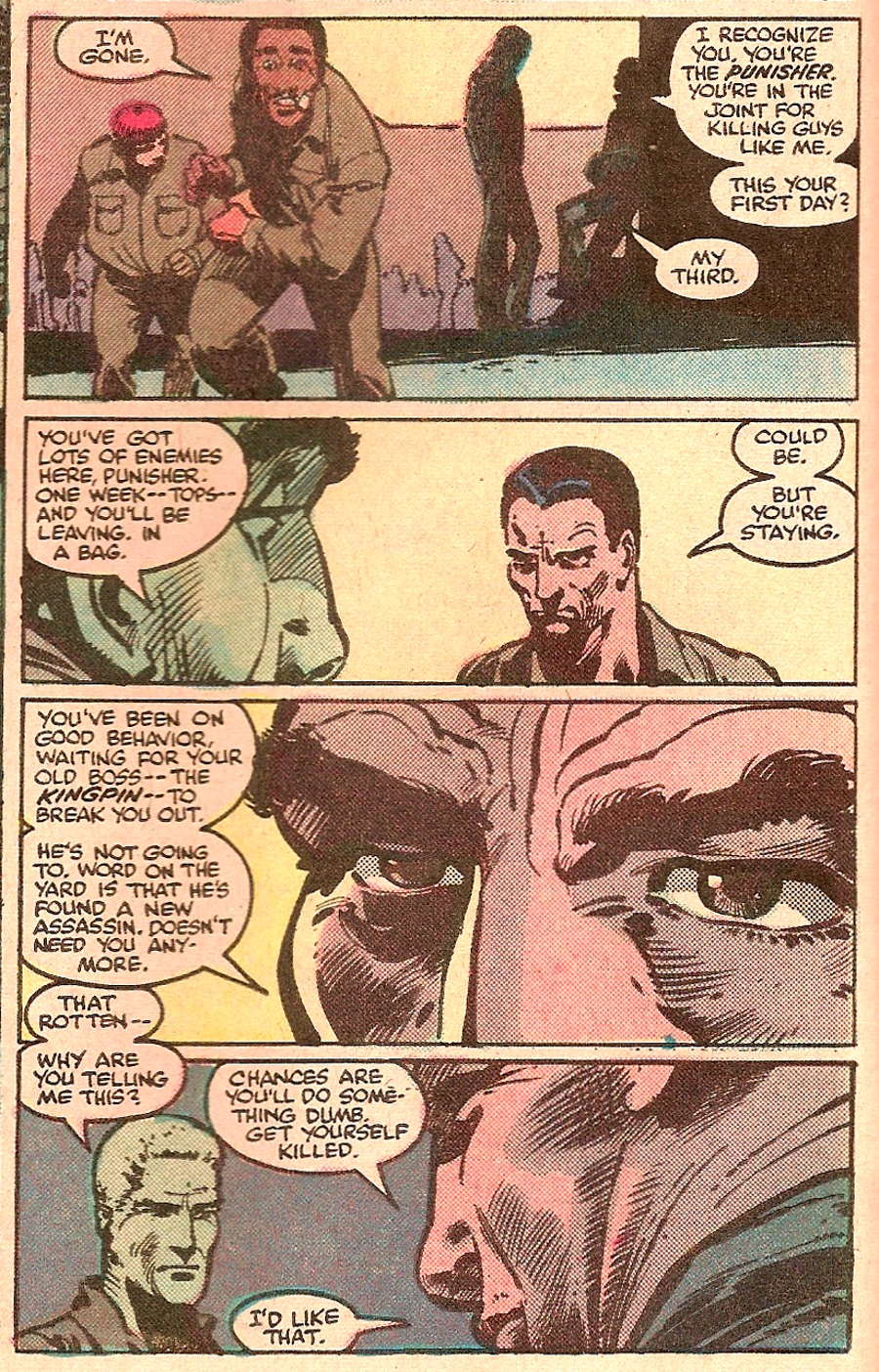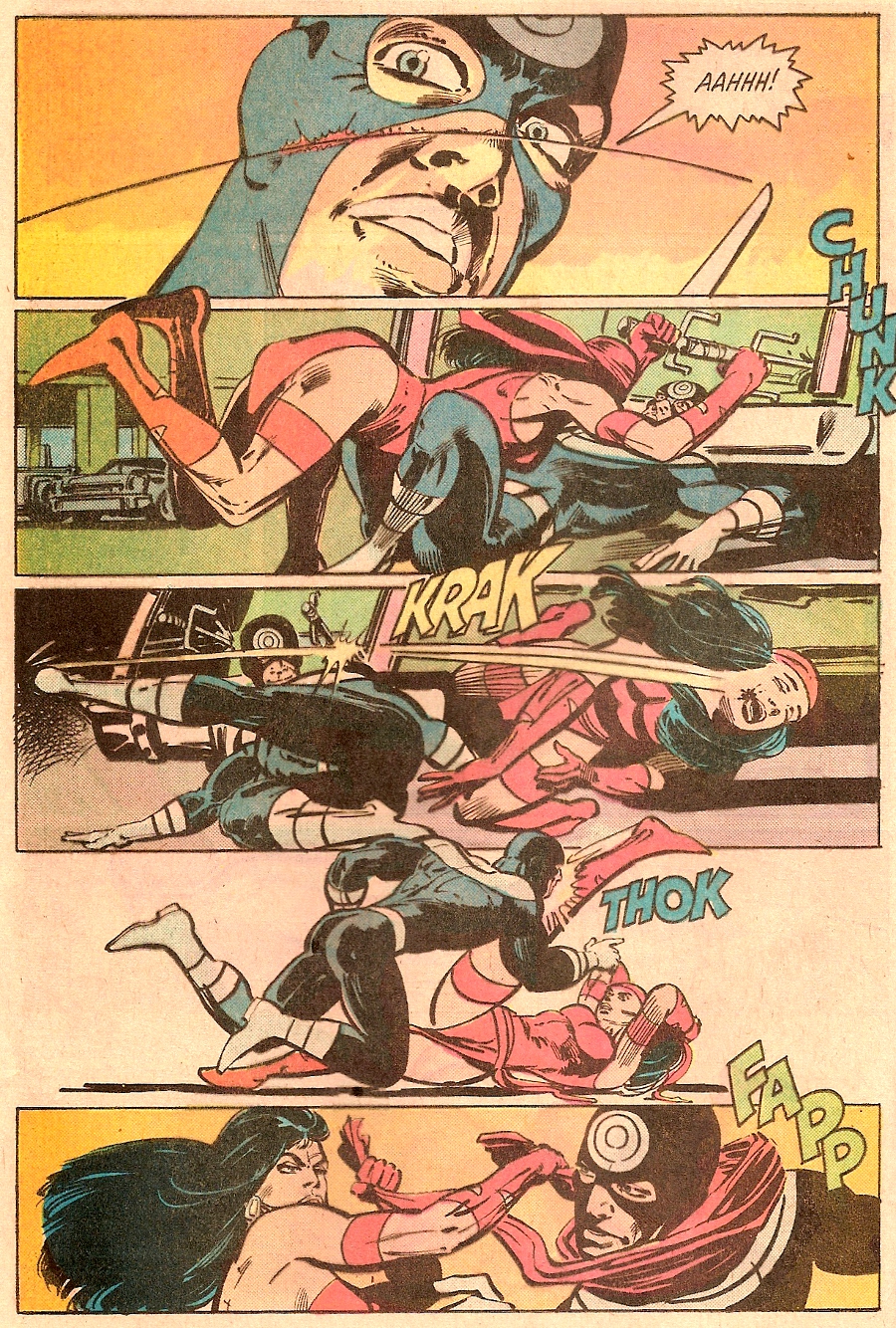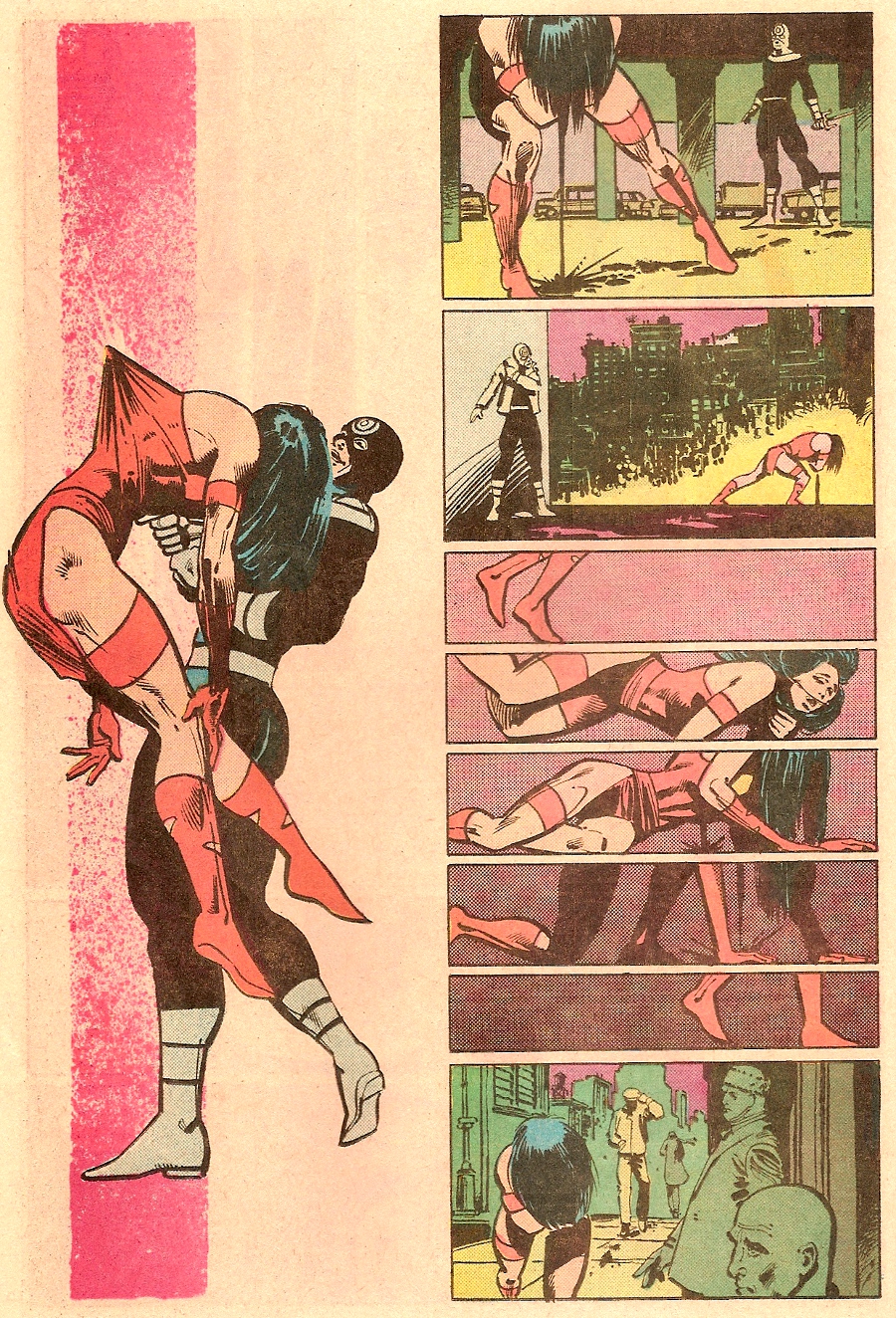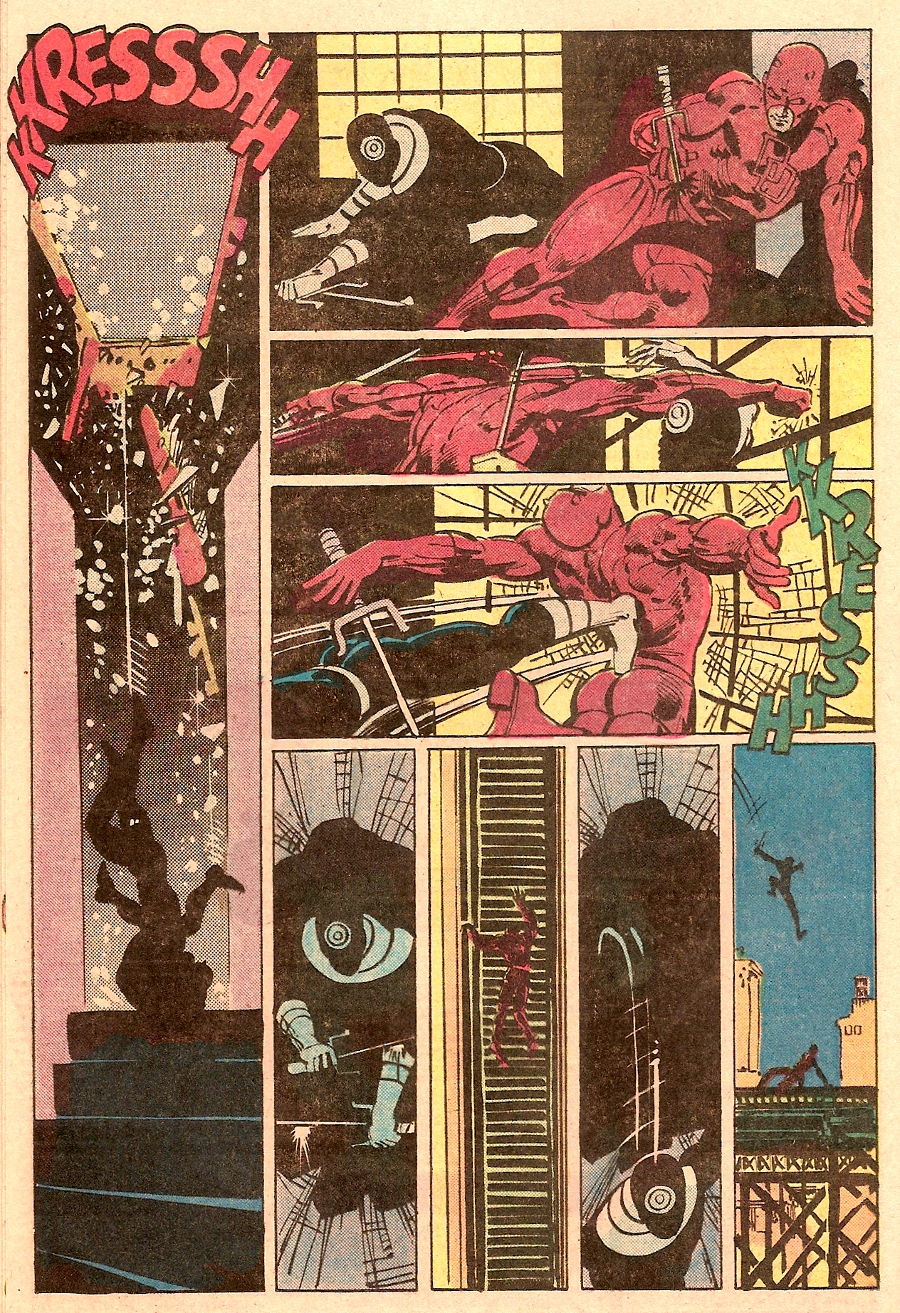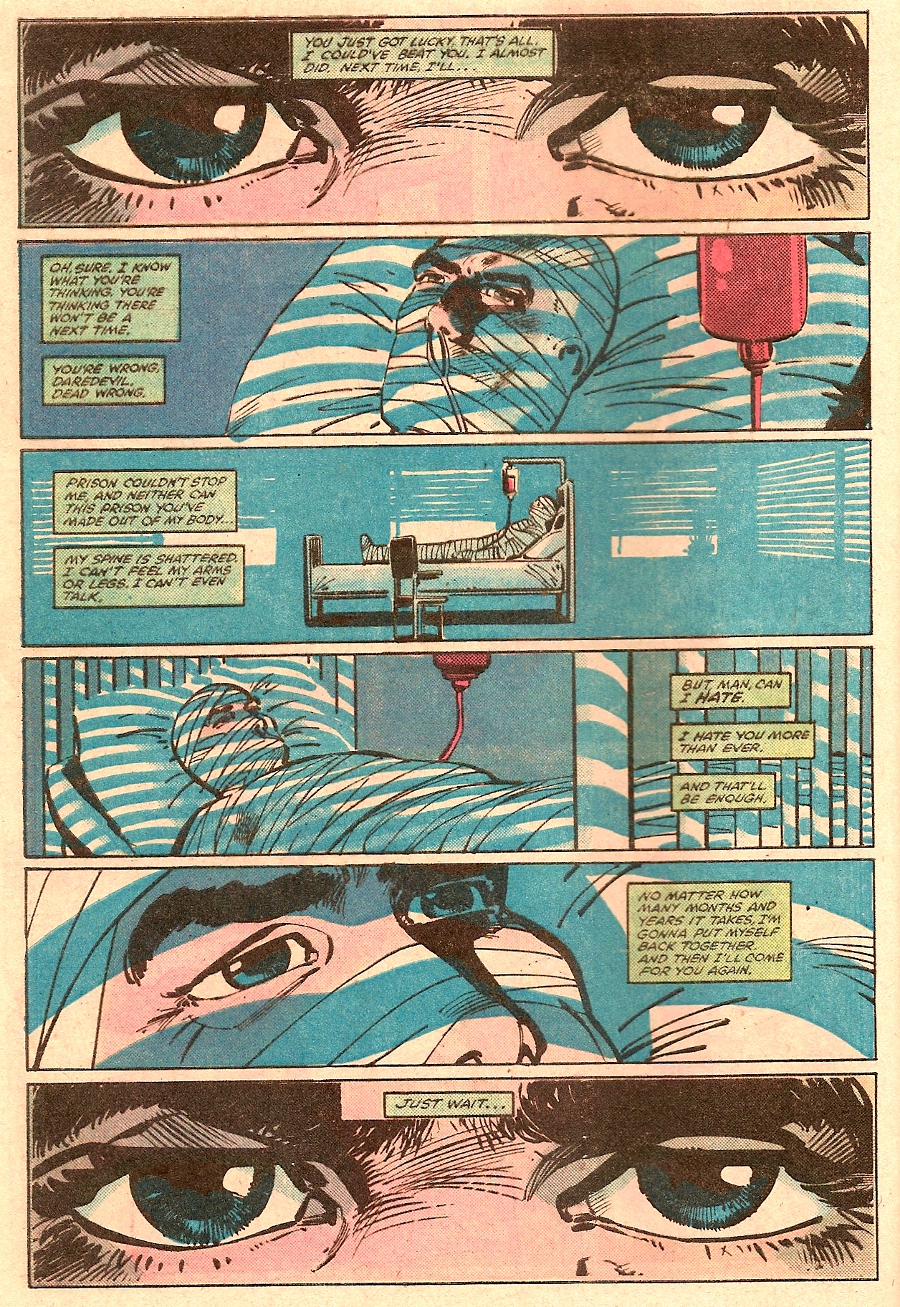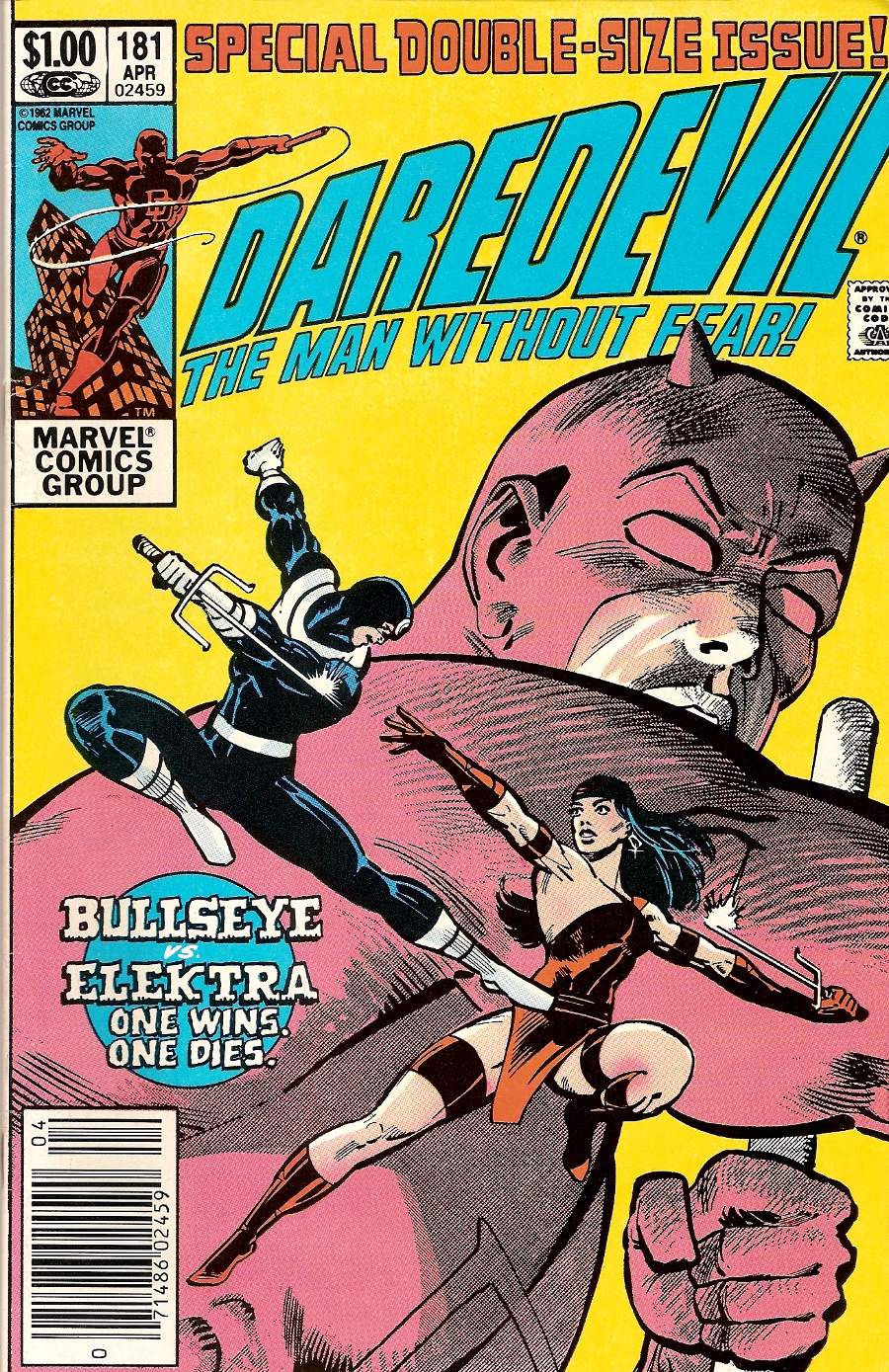 Since we’ll be presenting the conclusion to the recap of the 2003 Daredevil movie tomorrow, I thought I’d revisit one of the main issues of the comic that inspired the film, Frank Miller’s classic issue #181, “Last Hand,” written and pencilled by Miller with inks and colors by Klaus Janson.
Since we’ll be presenting the conclusion to the recap of the 2003 Daredevil movie tomorrow, I thought I’d revisit one of the main issues of the comic that inspired the film, Frank Miller’s classic issue #181, “Last Hand,” written and pencilled by Miller with inks and colors by Klaus Janson.
Miller was a fast-rising star at the time, having gotten a ton of critical acclaim after taking over the writing as well as the art on Daredevil: The Man Without Fear. Issue #181 was the culmination of a storyline that Miller seemed to have set up from his first two issues as writer. In issue #168, Miller introduced Elektra, Matt Murdock’s old girlfriend turned ninja assassin. And in issue #169, Bullseye, a villain who had faced Daredevil a few times before , had a showdown with Daredevil which ended with Bullseye burning for revenge.
Issue #181 opens with Bullseye in prison, fantasizing about how he will kill Daredevil. As he’s plotting his revenge, another prisoner approaches him.
This doesn’t sit well with Bullseye, who now has two urgent reasons to escape. And his opportunity comes soon enough, when a late-night talk show host requests a live interview with him (the same method the Joker would use to escape custody in Miller’s later Batman: The Dark Knight Returns). Bullseye escapes from custody and seeks out his old gang for information about this new assassin, the ninja Elektra.
Turns out, she has been contracted to kill Foggy Nelson, Matt Murdock’s partner and best friend. So Bullseye, after having gotten drunk enough while studying Nelson’s files to convince himself briefly that Matt Murdock might be Daredevil, ha-ha, starts trailing Nelson. And sure enough, Elektra tries to kill him, or at least intends to until he recognizes her as Matt’s old girlfriend. She then has an attack of conscience or something and lets him go.
Cue Bullseye. He and Elektra have a knockdown, dragout fight which goes on for several pages in the distinctive style that made Miller stand out so much from his peers.
You could, if you were so inclined, call this “cinematic,” with its intricate choreography and crowded, narrow horizontal panels simulating quick cuts. Note also the lack of dialogue or thought balloons, and the figures overlapping the panel borders, hitting each other so hard they seem to literally fly out of the panels. This was a huge difference from, say, Spider-Man, who would be wise-cracking non-stop even as his thought balloons would be narrating every action he took.
Finally, Bullseye gets the upper hand. He cuts Elektra’s throat with a playing card before shockingly stabbing her with her own sai.
She stumbles to Matt’s apartment and dies in his arms. When Matt goes to the morgue with Foggy to identify the body, Bullseye realizes that his crazy idea about Murdock and Daredevil wasn’t actually so crazy. Murdock really is Daredevil. He goes to the Kingpin to let him in on the fact, but Kingpin doesn’t believe him.
So Bullseye goes after Murdock on his own. But just before he kills the lawyer, Daredevil attacks him from behind. Murdock’s not Daredevil! What?
The trick, involving a dummy and a tape recorder, isn’t all that clever, but it serves to get us into the big final showdown between Daredevil and Bullseye. And once again, Miller shows off his absolute command of layout and timing.
Notice that the vertical actions–falling in panels 1, 7, and 8, plus looking down out the window in panel 5–are in vertical panels, while the horizontal actions-sprawling, punching, kicking–are in horizontal panels. The whole fight is staged like this, with the panel shapes reinforcing the actions happening within them. Miller makes it look easy, but it’s not.
The fight ends when Daredevil drops Bullseye from a great height, shattering his spine. And from the dialogue, it appears that Daredevil does it deliberately, although it’s left ambiguous enough that the Comics Code symbol still appears on the cover.
The issue ends with Bullseye once again imprisoned, this time paralyzed and trapped in a hospital bed, and once again fantasizing about revenge.
And those eyes burning at the top and bottom of the page? A motif that has recurred throughout the story.
Which was the thing about Miller. Miller’s big breakthrough, like Moore’s, was not just that he wrote darker stories. It was that he told stories with techniques gleaned from outside American superhero comics, which you didn’t see much in the mainstream in those days.
No matter how far Miller’s career has gone astray in the years since, it can’t be denied that he did a great service to American comics back in the day. “Last Hand” is a testament to that fact, a comic book story that feels fresher and grittier than the movie made from it over 20 years later.
Which you’ll see tomorrow.


